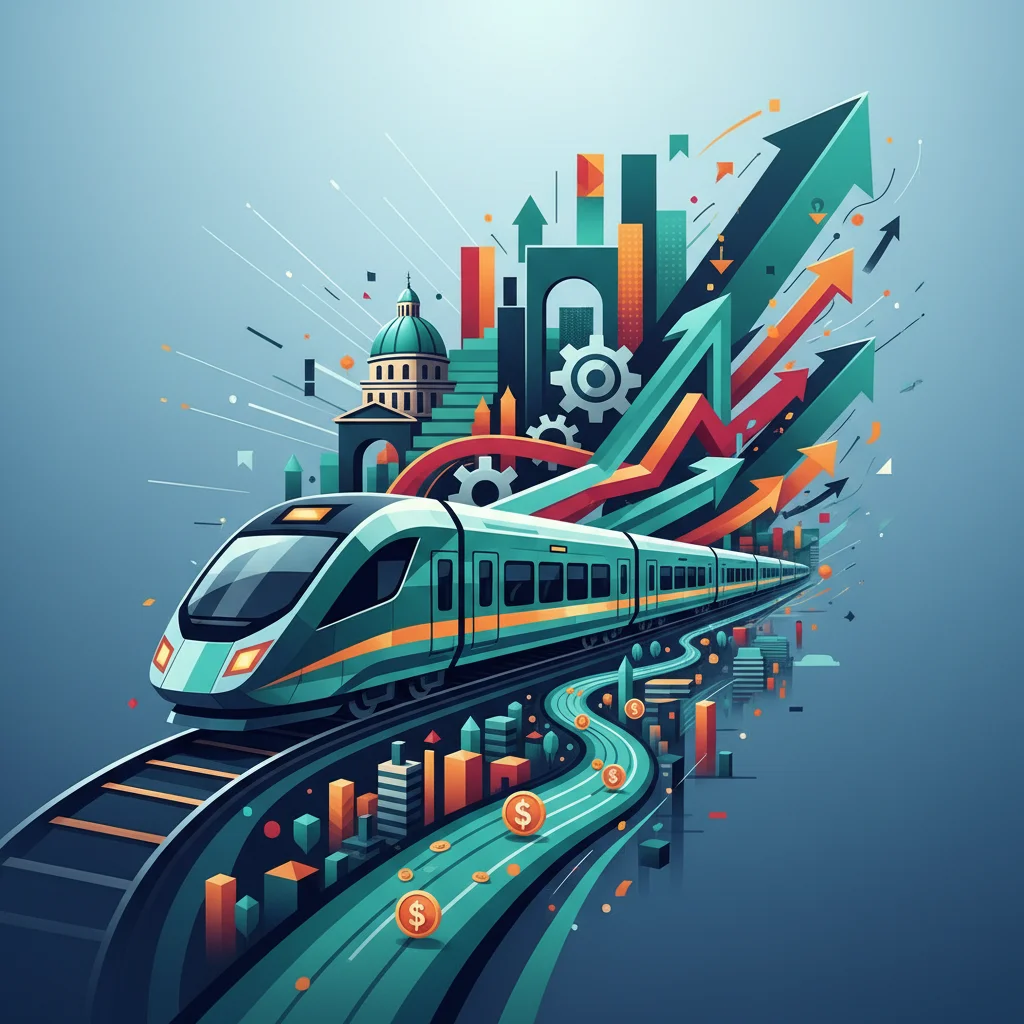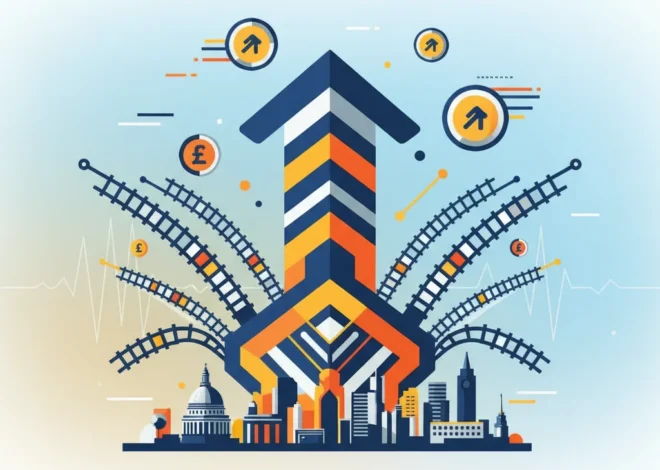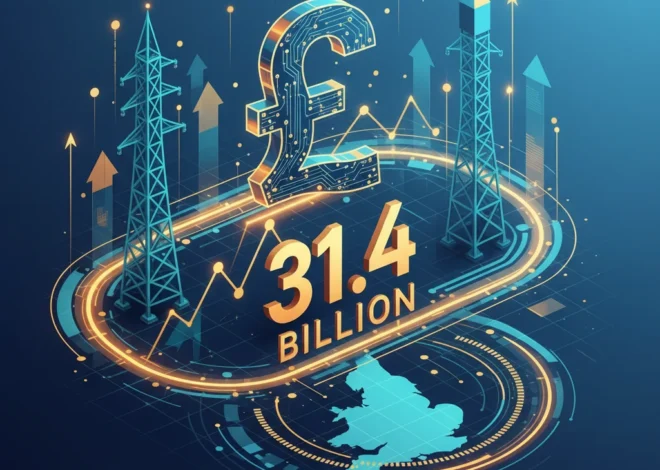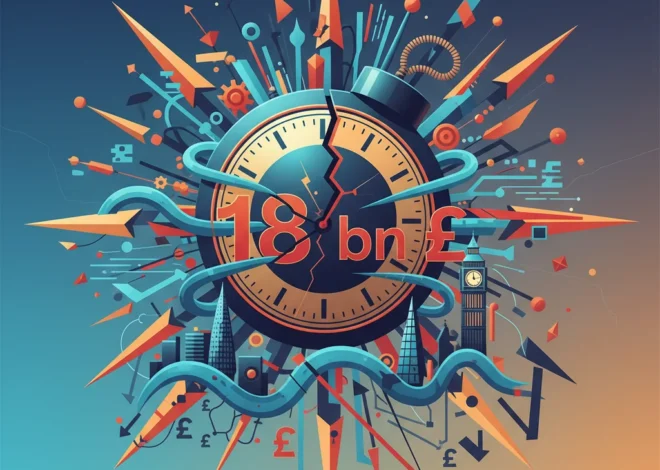
All Aboard for Growth: The Billion-Dollar Investment Lesson from Italy’s High-Speed Rail Revolution
In the world of finance and investing, we often look to complex stock market charts, intricate fintech models, or sprawling economic reports to find the next big lesson. Yet, sometimes the most profound insights come from unexpected places. Imagine standing on a platform in Rome’s Termini station, watching two sleek, competing high-speed trains—one ruby red, the other a gleaming silver—preparing to race towards Milan. This very scene represents one of Europe’s most successful, and often overlooked, case studies in market liberalization, a story that holds powerful implications for investors, business leaders, and policymakers alike.
A recent letter in the Financial Times by Andrea Goldstein succinctly highlighted the core lesson: the liberalization of Italy’s railways didn’t just work; it created a thriving, competitive duopoly that benefited everyone. This transformation from a stagnant state monopoly to a dynamic marketplace is more than just a story about trains. It’s a masterclass in competition theory, strategic investment, and the power of smart deregulation to unlock immense value in the broader economy.
This article will delve deep into the Italian railway revolution, exploring how a bold challenger took on a state-owned giant and, in doing so, created a blueprint for success that resonates far beyond the transport sector. We’ll unpack the economic principles at play, analyze the investment strategies that paid off, and draw critical lessons for anyone interested in the dynamics of market disruption, from banking and financial technology to energy and beyond.
The Age of Monopoly: A Journey to Stagnation
To appreciate the scale of the transformation, one must first understand the landscape before liberalization. For decades, Italy’s railways were the exclusive domain of Ferrovie dello Stato (FS), the state-owned holding company, with its passenger services operated by its subsidiary, Trenitalia. Like many state-run monopolies, it was characterized by a lack of competitive pressure, which often translated into high fares, limited innovation, and a service that wasn’t always centered on the customer.
The system functioned, but it lacked dynamism. There was little incentive for Trenitalia to aggressively upgrade its services, slash prices, or dramatically increase frequencies on its most popular routes. This was the accepted reality not just in Italy, but across much of Europe, where national rail services were seen as instruments of the state—essential public utilities rather than competitive commercial enterprises. This model provided stability but at the cost of efficiency and growth, a common theme in heavily regulated sectors of the economy.
Market Crossroads: 5 Critical Signals for Investors to Watch This Week
The European Directive: Forcing Open the Tracks
The catalyst for change came not from within Italy, but from Brussels. The European Union, through a series of legislative “Railway Packages,” began pushing member states to open their national rail networks to competition. The goal was to create a single, integrated European railway area, fostering cross-border services and driving down costs. The core principle was simple economics: competition breeds efficiency, innovation, and better value for consumers.
Italy became one of the first major European countries to fully embrace this directive for its high-speed network. This policy shift created the legal framework for a private operator to compete directly with the state incumbent. It was a bold economic experiment. Could a private, profit-driven entity realistically challenge a government-backed behemoth with a century-long head start? Many were skeptical, but a group of visionary investors saw an opportunity.
The Challenger Arrives: The Birth of NTV Italo
In 2012, the first crimson-liveried Italo train, operated by Nuovo Trasporto Viaggiatori (NTV), rolled out of the station. NTV was a startup in the truest sense, albeit one with serious financial backing from a consortium of Italian industrial titans, including Luca di Montezemolo of Ferrari fame and Diego Della Valle of Tod’s. They weren’t railway experts, but they were experts in branding, customer experience, and finance. They bet that Italians would embrace a choice.
NTV’s strategy was a case study in asymmetric competition. Instead of trying to replicate Trenitalia’s sprawling network, it focused exclusively on the most lucrative high-speed corridors connecting Italy’s major economic hubs: Rome, Milan, Naples, and Turin. This approach minimized risk and concentrated resources where the potential for return on investment was highest. They invested in a brand-new, state-of-the-art fleet of Alstom trains, emphasizing comfort, style, and onboard services like free Wi-Fi and a cinema carriage—features designed to lure business and leisure travelers away from both Trenitalia and the airlines.
The Duopoly Effect: A Virtuous Cycle of Competition
The entry of Italo into the market did not lead to the demise of Trenitalia. Instead, it ignited a fierce rivalry that created what economists call a “virtuous cycle.” Faced with a nimble and stylish competitor, Trenitalia was forced to react. The state-owned operator launched its own upgraded high-speed service, Frecciarossa (“Red Arrow”), invested in new trains, slashed its fares, and dramatically improved its customer service and digital booking platforms.
The results were nothing short of spectacular. The competition on the flagship Rome-Milan route—one of Europe’s busiest travel corridors—led to a dramatic increase in service quality and a significant drop in prices. The real winner was the consumer, who now had more choice, better service, and lower costs than ever before.
The impact on ridership and the market is best illustrated with data. While specific figures fluctuate, the trend is undeniable. A 2019 report from the Italian transport regulation authority highlighted the profound effects of this competition.
| Metric | Impact of Liberalization (Post-2012) |
|---|---|
| Average Fares | Decreased by an estimated 40% on competitive routes like Rome-Milan (source). |
| Passenger Volume | High-speed rail passengers in Italy more than doubled in the decade following liberalization. |
| Service Frequency | The number of daily high-speed services between Rome and Milan increased substantially, offering near “shuttle” frequency. |
| Modal Shift | Rail’s market share on the Rome-Milan route grew from 36% to over 80%, largely at the expense of air travel (source). |
This duopoly didn’t just split the existing pie; it baked a much larger one. The enhanced service and lower prices made high-speed rail an attractive option for a whole new segment of travelers, stimulating demand and contributing directly to the national economy.
Key Lessons for Finance and Investing
The success of Italy’s high-speed rail duopoly offers several actionable insights for investors and business leaders examining opportunities in any market, from infrastructure to the stock market.
1. The Power of a Focused Challenger: NTV Italo’s success demonstrates that a new entrant doesn’t need to match an incumbent’s scale to win. By focusing on a profitable niche with a superior product, a challenger can gain a strong foothold and force the entire market to adapt. This is a crucial lesson for startups in the fintech space competing with established banking giants.
2. Incumbents Can (and Must) Innovate: The story is as much about Trenitalia’s successful response as it is about Italo’s disruption. It proves that large, established organizations, even state-owned ones, can become more agile and competitive when faced with a credible threat. For investors, this means not automatically writing off incumbents in a disrupted industry; the ones that adapt can represent significant value.
3. Smart Regulation is the Key Enabler: This success story would not have happened without regulators ensuring fair access to the railway infrastructure (tracks, stations, and scheduling). For those investing in regulated industries, analyzing the quality and fairness of the regulatory framework is as important as analyzing the company itself. A predictable and pro-competitive environment is essential for long-term returns.
4. Infrastructure is a High-Value Asset Class: The journey of NTV Italo from a startup to a highly valuable enterprise, eventually acquired by the US-based fund Global Infrastructure Partners for approximately €2 billion in 2018 (source), underscores the immense financial potential of infrastructure assets. When competition unlocks efficiency and growth, the underlying assets become incredibly attractive, offering stable, long-term cash flows that are highly sought after in the world of finance.
The ,000 Gold Prophecy: Decoding Bank of America's Bold Bet on a New Commodity Supercycle
The Road Ahead: Challenges and Broader Implications
While the high-speed rail story is a resounding success, it’s not without its complexities. A key challenge remains the “other” part of the network: the less profitable regional and local lines. Critics argue that the focus on the lucrative high-speed corridors could risk a two-tier system where investment is siphoned away from essential but unprofitable public services. Balancing commercial viability with public service obligations is a delicate act that policymakers must continue to manage.
Furthermore, the future of transport infrastructure may involve even more sophisticated financial and technological layers. The efficiency of the network could be further enhanced by financial technology for seamless multi-modal ticketing and payments. In the long term, one could even envision technologies like blockchain being used to create transparent, real-time marketplaces for trading track access rights, optimizing network capacity in a way that is impossible today.
Conclusion: The Enduring Power of Competition
The journey from a sleepy state monopoly to a dynamic, world-class duopoly on Italy’s railways is a compelling chapter in modern economics. It serves as a powerful reminder that competition is not a zero-sum game. When managed correctly, it can unleash innovation, drive down prices, improve quality, and expand the entire market, creating value for consumers, operators, and investors.
The lesson from the sleek trains racing across the Italian peninsula is clear: whether in transportation, banking, or any other cornerstone of the economy, breaking down barriers to entry and fostering a competitive environment is one of the surest tracks to shared prosperity and robust financial returns. It’s a lesson that every investor and business leader should take on board.


